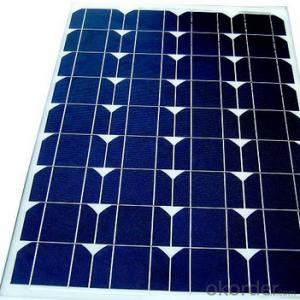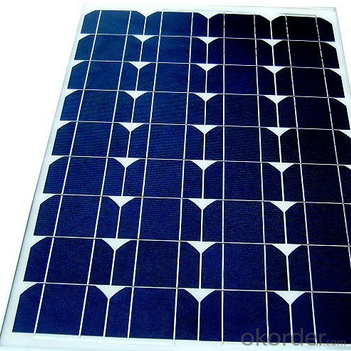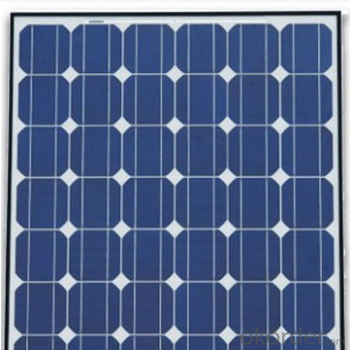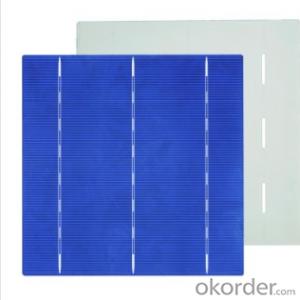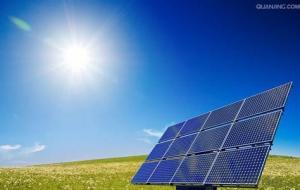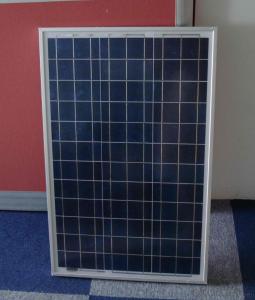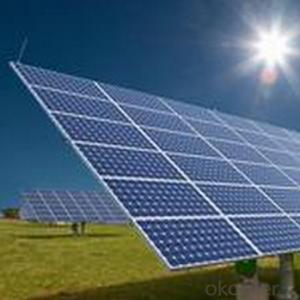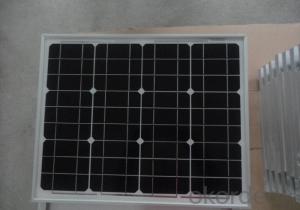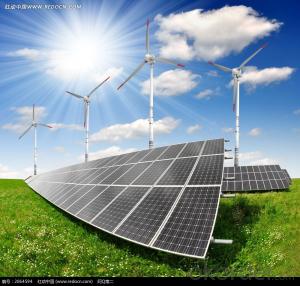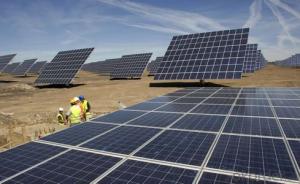Solar Cells in Egypt - High Efficiency 250W Mono Solar Module Icem-7
- Loading Port:
- China main port
- Payment Terms:
- TT OR LC
- Min Order Qty:
- 200 watt
- Supply Capability:
- 50000 watt/month
OKorder Service Pledge
OKorder Financial Service
You Might Also Like
Instruction
1. Low voltage-temperature coefficient allows higher power output at high-temperature condition.
2. High efficient, high reliable solar cells ensure our product output stability.
Feature
1. Manufactured in an ISO9001:2008 certified plant
2. High efficiency, high safety, high reliability
3. Output power tolerance of +/-3%
Images
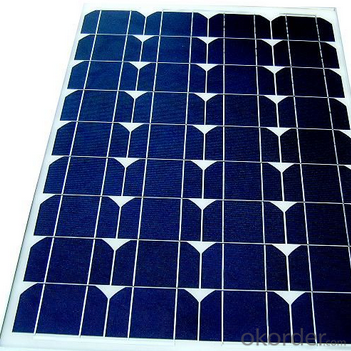
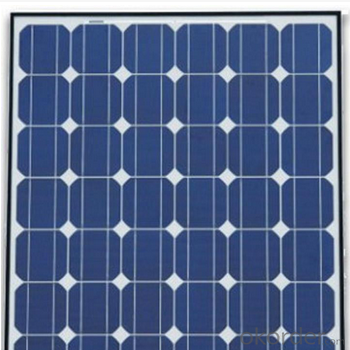
Specification
Electrical Characteristic of Mono Solar Cells
Efficiency (%) | Pmpp (W) | Umpp (V) | Impp (A) | Uoc (V) | Isc (A) | FF (%) |
18.35 | 4.384 | 0.526 | 8.333 | 0.63 | 8.877 | 78.39% |
18.20 | 4.349 | 0.526 | 8.263 | 0.63 | 8.789 | 78.54% |
18.05 | 4.313 | 0.525 | 8.216 | 0.63 | 8.741 | 78.32% |
17.90 | 4.277 | 0.524 | 8.161 | 0.629 | 8.713 | 78.04% |
17.75 | 4.241 | 0.523 | 8.116 | 0.629 | 8.678 | 77.70% |
17.60 | 4.206 | 0.521 | 8.073 | 0.628 | 8.657 | 77.36% |
17.45 | 4.170 | 0.519 | 8.039 | 0.628 | 8.633 | 76.92% |
17.30 | 4.134 | 0.517 | 8.004 | 0.626 | 8.622 | 76.59% |
17.15 | 4.098 | 0.516 | 7.938 | 0.625 | 8.537 | 76.80% |
17.00 | 4.062 | 0.512 | 7.933 | 0.625 | 8.531 | 76.18% |
16.75 | 4.002 | 0.511 | 7.828 | 0.625 | 8.499 | 75.34% |
16.50 | 3.943 | 0.510 | 7.731 | 0.625 | 8.484 | 74.36% |
FAQ
We have organized several common questions for our clients,may help you sincerely:
1. What’s price per watt?
A: It’s depends on the quantity, delivery date and payment terms of the order. We can talk further about the detail price issue. Our products is high quality with lower price level.
2. Can you tell me the parameter of your solar cells?
We have different series of cells with different power output, both from c-si to a-si. Please take our specification sheet for your reference.
3. How do you pack your products?
We have rich experience on how to pack the panels to make sure the safety on shipment when it arrives at the destination.
- Q: How do solar cells handle voltage fluctuations in the grid?
- Solar cells do not directly handle voltage fluctuations in the grid. However, inverters, which are connected to solar cells, play a crucial role in managing voltage fluctuations by converting the direct current (DC) generated by solar cells into alternating current (AC) that matches the grid's voltage and frequency. Inverters also have the ability to regulate voltage and synchronize with the grid, ensuring stability and safe integration of solar power into the grid.
- Q: Can solar cells be used for powering water treatment plants?
- Yes, solar cells can be used for powering water treatment plants. Solar energy can be harnessed through solar panels and converted into electricity to power the various processes involved in water treatment, such as pumping water, filtering, disinfection, and distribution. This not only reduces reliance on traditional energy sources but also provides a sustainable and environmentally-friendly solution for powering water treatment plants.
- Q: Can solar cells be used for cooking?
- Yes, solar cells can be used for cooking by converting sunlight into electrical energy, which can be used to power electric stoves or heat sources for cooking.
- Q: Solar panel resistance is changed with what
- the lower the ambient temperature, the smaller the internal resistance of the battery, power generation The higher the effect; the other hand, the higher the temperature, the greater the internal resistance, the lower the efficiency.
- Q: Can solar cells be used to charge electric vehicles?
- Yes, solar cells can be used to charge electric vehicles. Solar panels can be installed on the roof or other surfaces of an electric vehicle to generate electricity from sunlight. This electricity can then be used to charge the vehicle's battery, providing a renewable and sustainable source of energy.
- Q: How efficient are solar cells?
- Solar cells are highly efficient at converting sunlight into electricity, with the average efficiency of commercial solar panels ranging from 15% to 20%. However, advancements in technology have led to the development of more efficient solar cells, such as multi-junction cells, which can achieve efficiencies of over 40%.
- Q: How do solar cells impact global warming?
- Solar cells have a positive impact on global warming as they generate electricity by harnessing the sun's energy, reducing the reliance on fossil fuels. By producing clean and renewable energy, solar cells help to mitigate greenhouse gas emissions, thereby reducing the overall contribution to global warming.
- Q: Solar cells and the difference between ordinary batteries. Why is the solar cell is converted into electrical energy, zinc battery is what is converted into chemical energy
- Ordinary batteries have a certain life, can not be stored for too long, or the power will slowly run out of solar cells do not exist chemical failure, can be long-term preservation.
- Q: How are solar cells installed on rooftops?
- Solar cells are typically installed on rooftops using a mounting system that secures the panels in place. This involves attaching metal brackets or rails onto the roof, which act as the support structure for the solar panels. The panels are then placed onto these brackets and secured using clamps or screws. The installation process requires careful positioning and alignment to ensure maximum sunlight exposure for efficient energy generation.
- Q: Can solar cells be used in farming or agriculture?
- Yes, solar cells can be used in farming or agriculture. They can be used to power various agricultural processes such as irrigation systems, lighting, and machinery. Additionally, solar panels can be installed on rooftops or in fields to generate electricity, reducing reliance on the grid and providing a sustainable energy source for farming operations.
Send your message to us
Solar Cells in Egypt - High Efficiency 250W Mono Solar Module Icem-7
- Loading Port:
- China main port
- Payment Terms:
- TT OR LC
- Min Order Qty:
- 200 watt
- Supply Capability:
- 50000 watt/month
OKorder Service Pledge
OKorder Financial Service
Similar products
Hot products
Hot Searches
Related keywords
